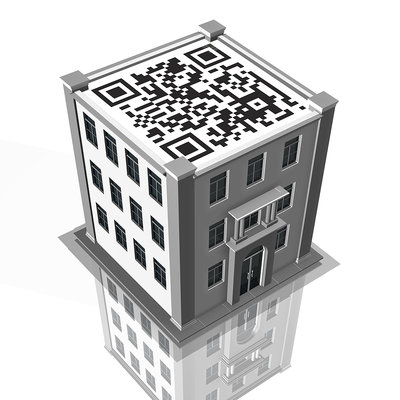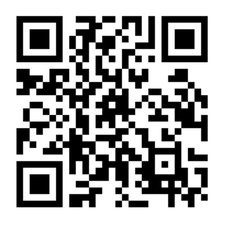QR Codes Help Marketers Extend Messages
The black-and-white square patterns popping up on advertisements, products, storefronts and business cards are officially known as QR (Quick Response) codes. These modern barcodes can be read by a variety of devices including today’s smartphones. The encoded information may reveal text, a URL, contact information, or other useful data.
QR originated in Japan where it was created by a Toyota subsidiary and first used to track parts in vehicle manufacturing. Now, QR codes can display text to the user; add vCard contact information to the user’s device; open a URL, or compose an email or text message. Users can also generate and print their own QR codes for others to scan and use by visiting one of several free QR code generating sites. In Japan, where the technique began, QR has an unusual use, as grave markers in cemeteries to share more information and bring mourners together.
Curious consumers often scan QR codes as a novel way to learn more about what’s being offered. As a result, QR codes are becoming an increasingly important part of modern marketing and are being integrated into both traditional and interactive campaigns. Among media in which QR codes are deployed are: billboard ads, guerrilla marketing campaigns, in-store displays, event ticketing and tracking, trade-show management, business cards, print ads, contests, direct mail campaigns, websites, email marketing, and couponing. QR codes enable marketers to measure response rates fairly accurately, a practice that helps justify spending.
Some artists have incorporated QRs into their work. Italian artist Fabrice de Nola has used QR codes in oil paintings and embedded them in photographs. The British pop group Pet Shop Boys used QR code for artwork on one version of their single, “Integral,” where the scanned code directs users to the music group’s website. Other artists using QR code in their work include Australia’s Simone O’Callaghan, who linked photographic prints to online content about where the pictures were taken, and Kylie Minogue’s music video for her 2010 single, “All the Lovers.”
QR code has also been incorporated into a new genre of literature, known as devise literature, in which graphics create a bridge between printed and electronic media.
The Canadian Government embeds a QR code on the front page of their online PDF application form for passports. As the form is filled out, the code is updated.
Some new and/or projected usages for QR code include games; on historic site markets to bring the visitor more information; to add video to book contents, especially in children’s books; on produce to enable shoppers to learn where the item was grown; and in airports to allow flyers to update current flight status.
According to a report from mobile payments and marketing company Mobio Identity Systems Inc., during the last six months of 2010, QR code scanning increased 1,200 percent across North America. The report also found that Facebook and Twitter have been integral to the explosion of the QR code phenomenon.
To generate a QR, retailers (or anyone else) can start with sites such as Kaywa, iCandy or Stickybits. Kaywa’s QR code generator is the simplest way to generate a QR code for a URL, text, phone number or SMS. Select a preference, enter the content, specify size and click “Generate.” Then, save the code to use elsewhere or grab the HTML to embed it online. iCandy is more robust and enables users to track scans and look at analytics around generated QR codes. Stickybits is slightly different, but makes it simple to create stickers for certain codes. iPhone options include QuickMark and Optiscan. On Android, Barcode Scanner is a popular QR reader.
Have you used QR in your marketing campaigns? Let us know your success stories,












